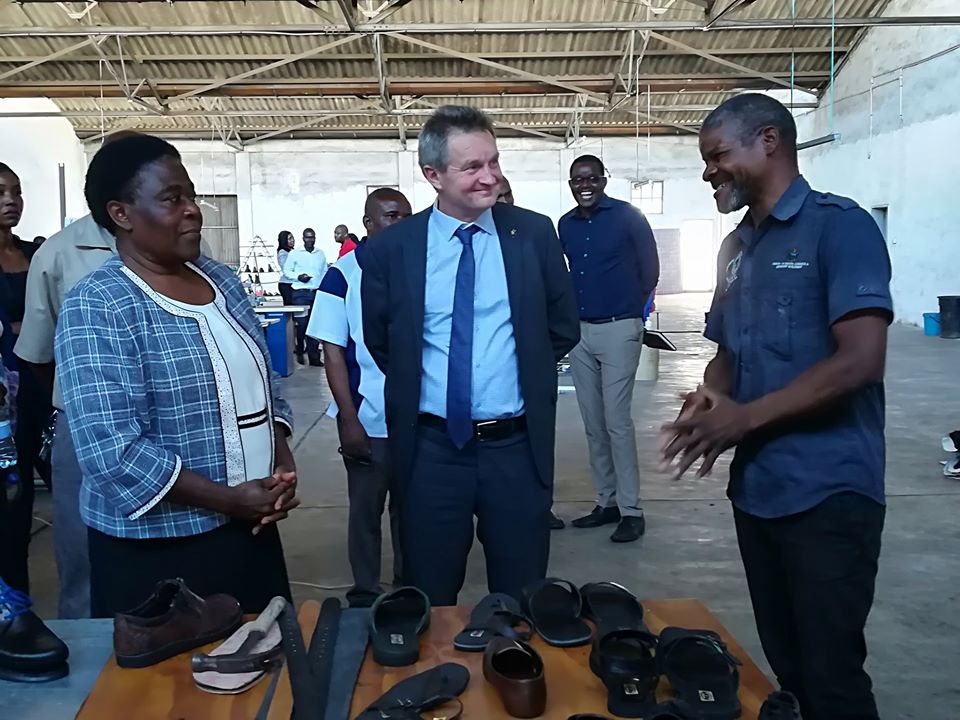European Union Ambassador to Zimbabwe Timo Olkkonen has expressed satisfaction on the progress being made at one of the EU-funded leather clusters in Bulawayo which specialises in manufacturing shoes and other leather products.
Touring the White Site Engineering incubator center, located at Clothing Industry Pension Fund Industrial Park, Wednesday, Ambassador Olkkonen, said he was impressed by the quality of products being made at the center.
“It is a good thing that this company is here in Bulawayo because Matabeleland is well known for breeding cattle which means hides which are used to make some of the products are found locally. This is a good starting point for creating sustainable value chains,” said the Ambassador.
“Most of these products are quite impressive. The fact that there are plans for integrating international society is good progress. There is an undeniable demand for footwear globally hence your supply would be significant. The EU as a whole is very much interested in supporting projects which sustain economies and enhance job creation.”
Fungai Zvakandiwona, secretary-general of the leather cluster, explained how the company has since secured a market in Namibia and how they ensure they timeously supply their products.
“We have identified Namibia where we plan on selling our products. Zimbabwe is a landlocked country and most of the materials we require are imported. When we make our business deals, we factor in the time needed to acquire raw materials and the time needed to make enough products for supply,” he said.
Zvakandiwona noted that the company aims to incorporate more females and youths into the sector within the next five years.
“Our main aim is that at least in the next five years we are sitting back and have new blood running this factory. There is a time for making money and there is a time for making a difference. Right now, this cluster aims at making a difference. We hope that in the next five years we would have become an export processing zone,” he said.

